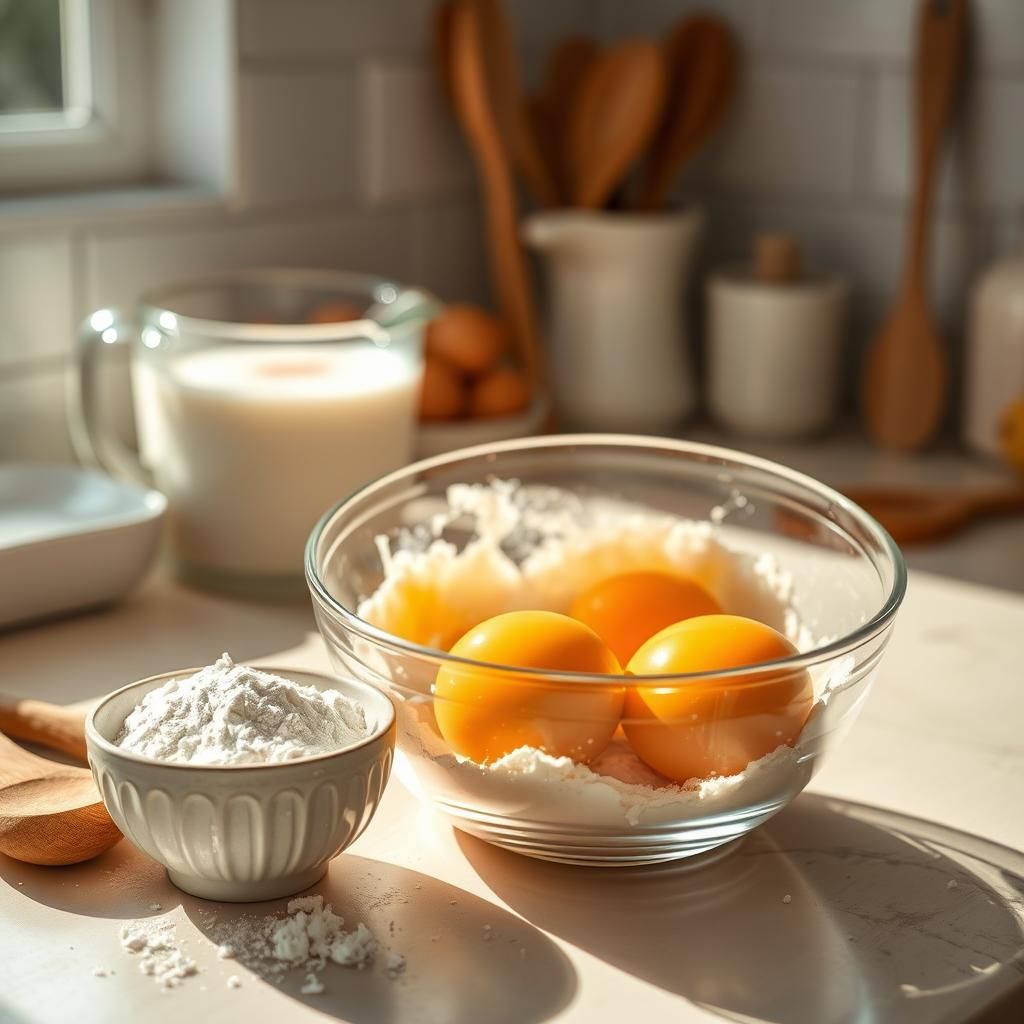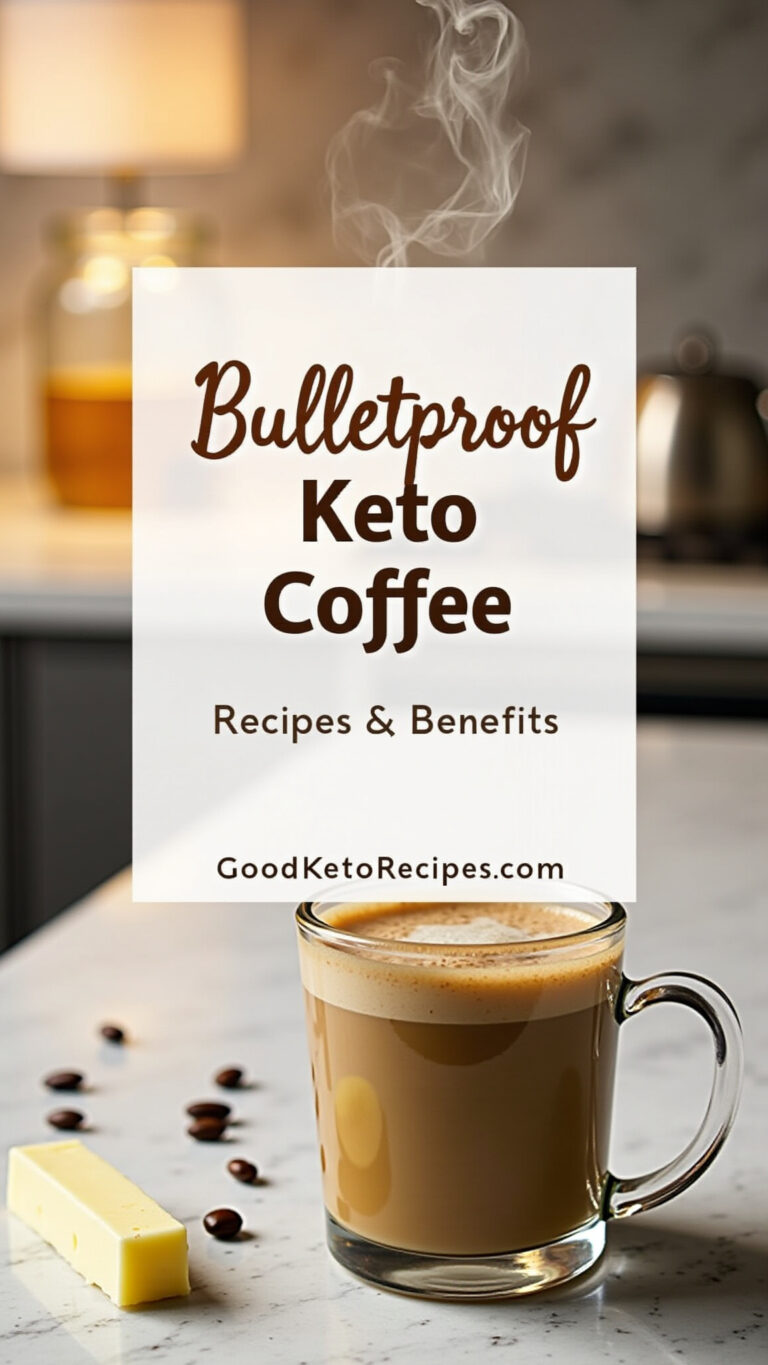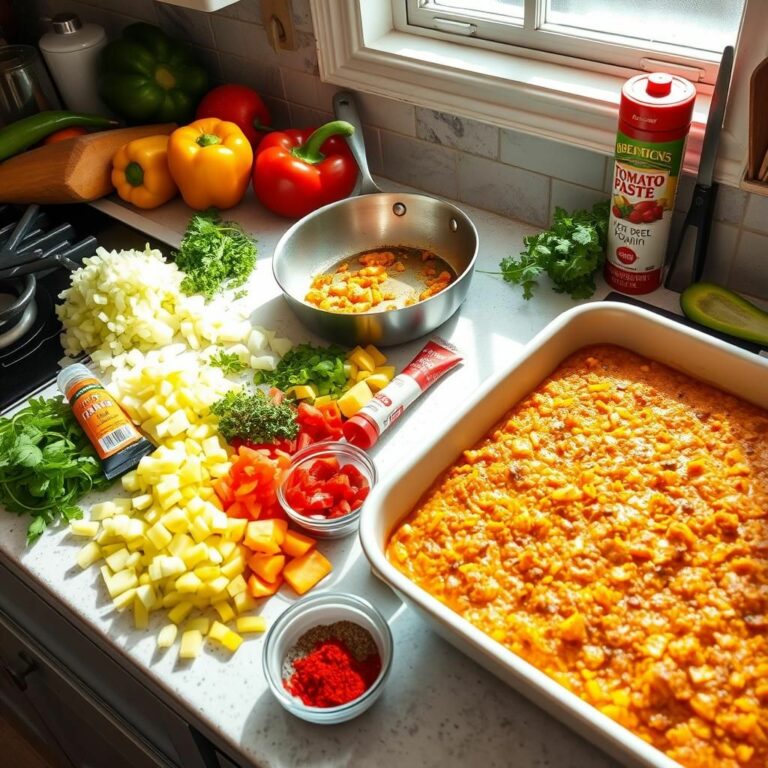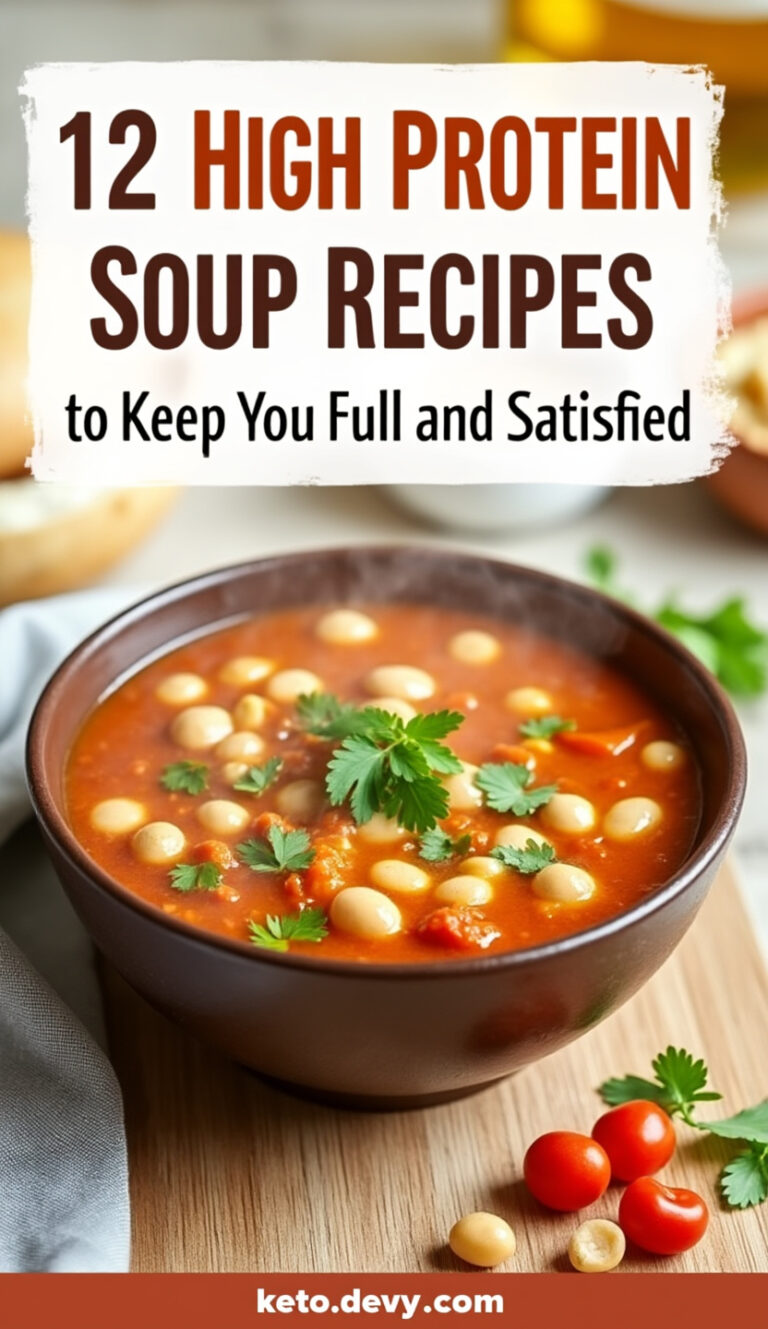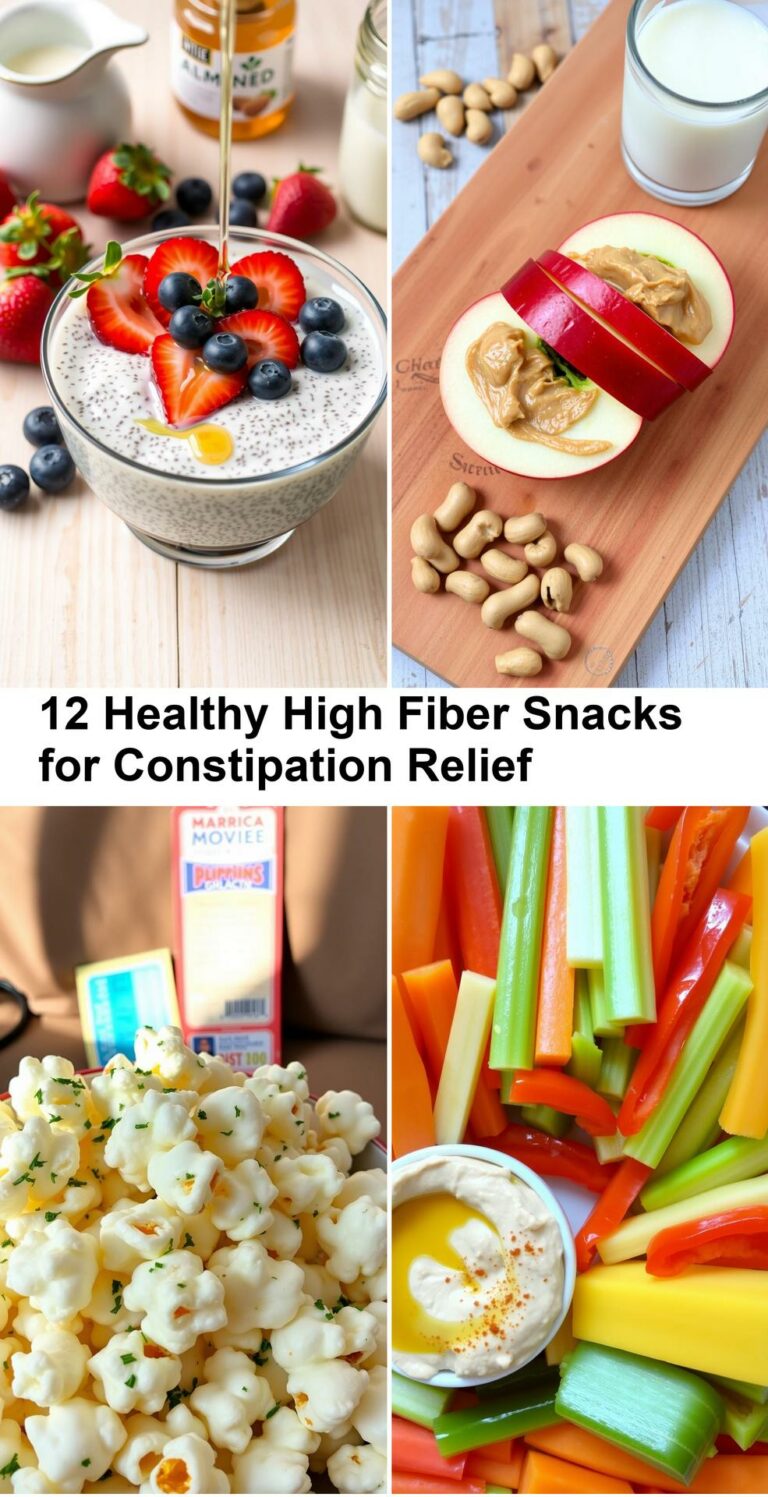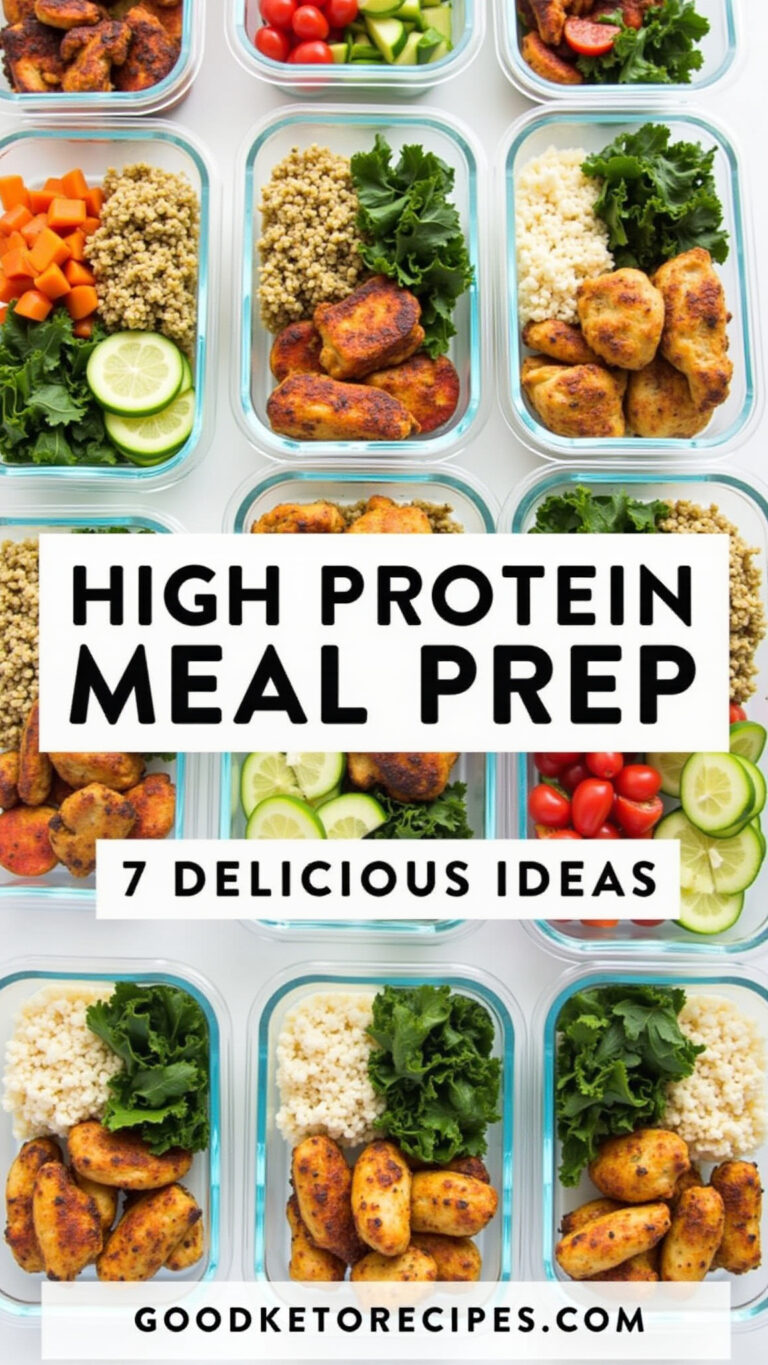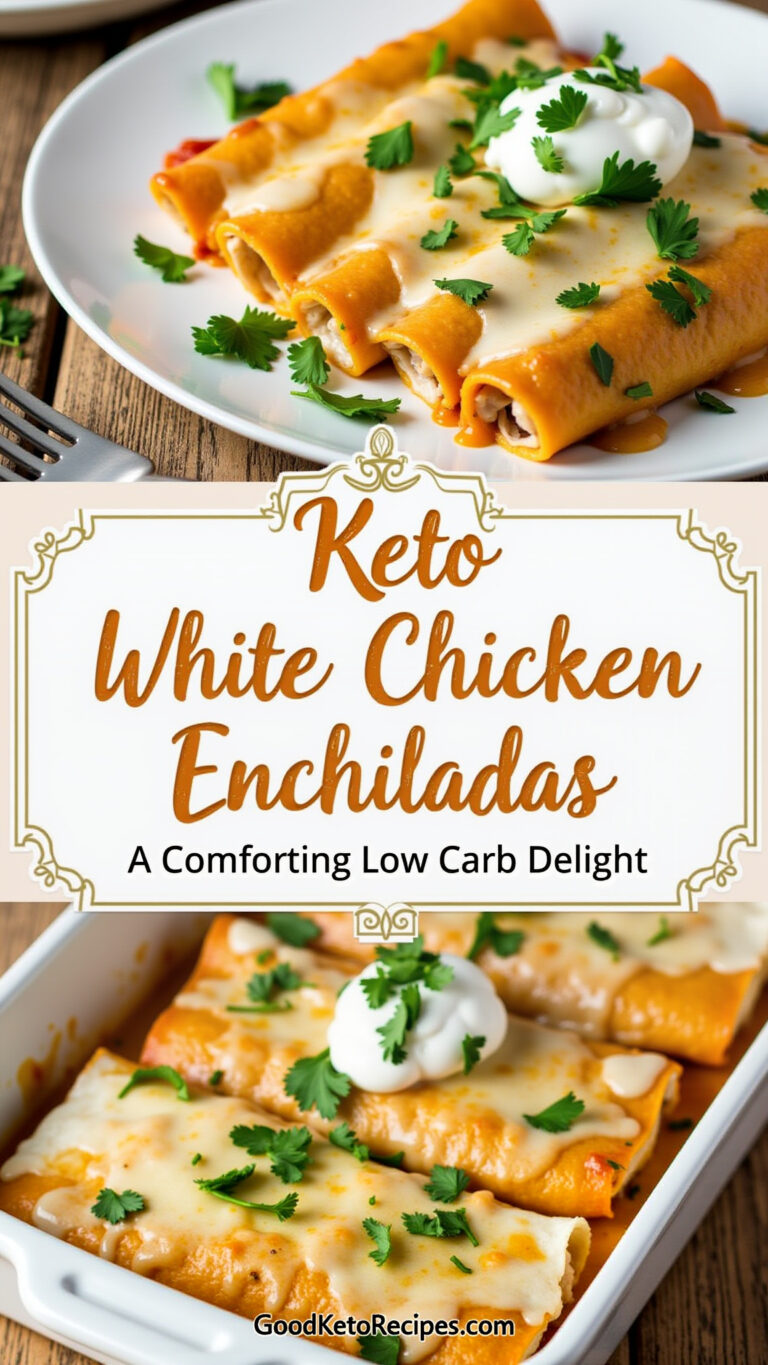3 Ingredient Coconut Flour Pancakes (Keto Recipe)
Finding delicious, satisfying breakfast options on a ketogenic diet can sometimes feel like a challenge. Traditional favorites like pancakes are often loaded with carbs and sugar, making them off-limits for those aiming for ketosis. But what if you could enjoy fluffy, golden pancakes that are not only keto-friendly but also incredibly simple to make?Enter the magic of coconut flour. This unique ingredient, combined with just a couple of other staples, unlocks the door to quick, easy, and guilt-free keto pancakes. This recipe isn’t just a workaround; it’s a genuinely tasty alternative that requires minimal effort and time, perfect for busy mornings or a relaxed weekend brunch without derailing your low-carb goals.We’ll provide the exact recipe, explain *why* these three simple components work together so effectively, offer tips for flawless execution, troubleshoot common issues, and explore ways to elevate this basic recipe with optional additions and delicious keto-approved toppings. We’ll also discuss the nutritional benefits and compare them to other keto pancake options, ensuring you have all the knowledge needed to make these a regular part of your keto lifestyle. Get ready to flip your way to a fantastic keto breakfast!
Why Just 3 Ingredients? The Beauty of Simplicity
The appeal of a 3-ingredient recipe is undeniable. It signals ease, speed, and accessibility. For those navigating the restrictions of a keto diet, simplifying meal preparation can be a significant factor in adherence. A short ingredient list means less shopping, less measuring, and less cleanup.In the case of these coconut flour pancakes, the minimalist approach is possible because of the specific properties of the ingredients used. Coconut flour, unlike wheat flour or even almond flour, is extremely absorbent. It requires a significant amount of liquid to hydrate properly. When combined with eggs, which act as both a binder and a liquid source, and a crucial third component (often a liquid or leavener), a workable batter can be formed with surprisingly few additions.This recipe leverages the unique chemistry of these three components to create a structure that, while perhaps slightly different in texture from traditional pancakes, is nonetheless satisfying, functional, and perfectly aligned with keto principles. It strips away unnecessary starches and sugars, focusing purely on creating a low-carb base.Custom Keto DietThe Ultimate Keto Meal Plan
The Essential 3 Ingredients
Understanding the role of each ingredient is key to mastering this simple recipe and troubleshooting if needed. The beauty lies in their synergy. While variations exist, the most common and effective “3 ingredients” for a truly minimal coconut flour pancake usually consist of:* Coconut Flour* Eggs* A Keto-Friendly Liquid (like unsweetened almond milk or even water)Let’s break down why each is essential:
Coconut Flour
Coconut flour is the star of this recipe and the primary source of structure. It’s made from dried, defatted coconut meat that has been ground into a fine powder. Unlike traditional wheat flour, it is gluten-free and very low in digestible carbohydrates, making it ideal for keto and low-carb diets.* **High Absorbency:** This is the most critical characteristic when using coconut flour. It absorbs significantly more liquid than other flours, sometimes absorbing up to four times its weight. This is why you need much less coconut flour compared to almond flour or wheat flour in a recipe. It’s also why the ratio of liquid (including the eggs) to flour is so different.* **Binding Properties (Limited):** While it provides structure, it doesn’t have the elastic gluten network of wheat flour. This is why eggs are essential as the primary binder to prevent the pancakes from crumbling.* **Nutritional Punch:** Coconut flour is relatively high in fiber, which is beneficial for digestion and can help contribute to the total fiber intake often needed on keto. It also contains some protein and healthy fats.* **Unique Texture:** It can sometimes produce a slightly denser or more crumbly texture compared to wheat flour, which is where technique (like resting the batter) becomes important.* **Flavor:** It imparts a subtle coconut flavor, which pairs well with many breakfast toppings.Using high-quality, finely ground coconut flour is recommended for the best texture. Ensure it’s relatively fresh, as older flour can become compacted and affect the batter consistency.
Eggs
Eggs serve multiple vital functions in this recipe:* **Binding:** As mentioned, eggs are the primary binder, holding the pancake batter together. Without them, the pancakes would likely fall apart when you try to flip them.* **Leavening (Minor):** Whisking eggs incorporates some air, which can provide a slight lift to the pancakes, although a dedicated leavening agent like baking powder (an optional 4th ingredient we’ll discuss) is often needed for significant fluffiness.* **Liquid:** Eggs contribute a significant amount of liquid to hydrate the absorbent coconut flour. The size of the eggs can actually impact the final batter consistency, which is why consistent egg sizing (usually large) is recommended.* **Nutrients:** Eggs add valuable protein and healthy fats, contributing to the satiating nature of these keto pancakes.Using large, fresh eggs will yield the most consistent results.
Keto-Friendly Liquid
While the eggs provide some liquid, coconut flour typically requires more hydration than eggs alone can provide for a spreadable batter. Adding a keto-friendly liquid helps achieve the right consistency and ensures the flour is fully hydrated, preventing a dry or gritty texture.* **Unsweetened Almond Milk:** This is a popular choice due to its low carb count and neutral flavor. Ensure it’s unsweetened to keep the carbs down.* **Full-Fat Coconut Milk (from a can, mixed):** Provides a richer flavor and higher fat content, which can be desirable on keto. Make sure to mix the solid and liquid parts thoroughly before measuring.* **Heavy Cream (diluted with water):** For a richer, more decadent pancake, a small amount of heavy cream can be used, perhaps diluted with a little water or almond milk to get the right consistency without adding too many calories or thickening the batter too much.* **Water:** While not adding flavor or fat, water *can* be used if you are strictly aiming for the *most* minimal recipe possible and don’t mind a less rich result. However, unsweetened almond milk is generally preferred for texture and flavor.The amount of liquid needed can vary slightly depending on the specific coconut flour used and the size of your eggs. It’s often best to add the liquid gradually until the desired batter consistency is reached.Keto Breads and Pizza recipe bookKeto Soup Detox
Step-by-Step: Making Your Keto Pancakes
With your three simple ingredients ready, making these pancakes is straightforward. Precision in technique, especially regarding batter consistency and cooking heat, is key to success.
Preparation
* **Gather Ingredients:** Have your coconut flour, eggs, and keto-friendly liquid measured and ready.* **Preheat Pan:** Place a non-stick skillet or griddle over medium heat. Cast iron works well too, once properly seasoned. Achieving the right temperature is crucial – too low and they won’t cook through, too high and they’ll burn before the inside is done. Medium is typically the sweet spot.* **Grease the Pan:** Add a small amount of keto-friendly fat to the pan. Options include: * Coconut oil * Butter (clarified butter or ghee has a higher smoke point) * Avocado oil * MCT oil spray (use cautiously as it can smoke easily) Swirl it around or brush it to lightly coat the cooking surface. Wipe away any excess fat with a paper towel – too much fat can cause the edges to get crispy before the center cooks.
Mixing the Batter
* **Combine Wet Ingredients:** In a medium bowl, crack the eggs and whisk them thoroughly until well combined and slightly frothy. This incorporates a little air.* **Add Coconut Flour:** Add the measured coconut flour to the whisked eggs.
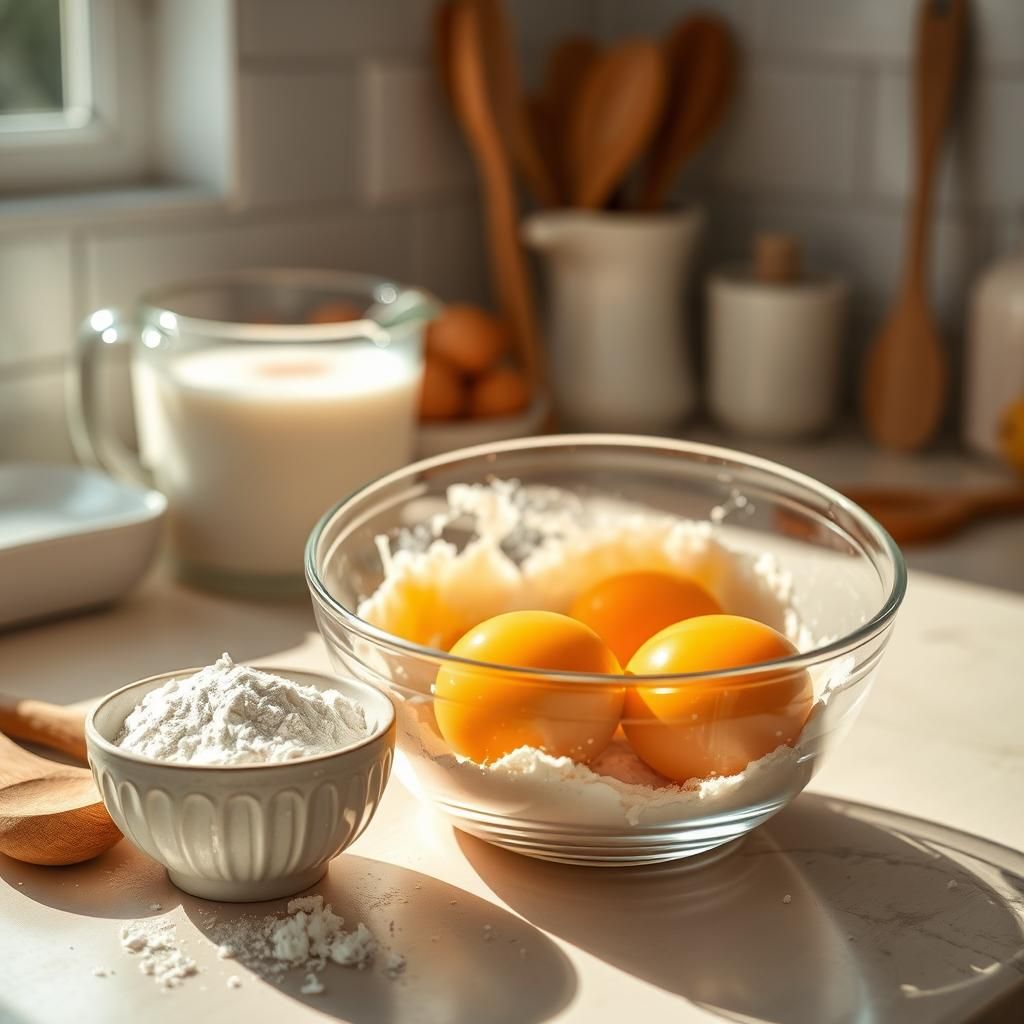
* **Combine:** Stir or whisk the eggs and coconut flour together. It will likely form a very thick paste or dough-like consistency initially.* **Gradually Add Liquid:** This is a critical step. Begin adding your chosen keto-friendly liquid (almond milk, etc.) gradually, while continuously whisking or stirring. Start with about half the expected amount and add more as needed. Coconut flour absorbs liquid over time, so you want to add just enough to create a pourable, but still relatively thick, batter. It should be thicker than traditional pancake batter but shouldn’t be a solid lump. A good consistency is somewhere between a thick gravy and a thin pudding.* **Mix Until Smooth:** Ensure there are no dry clumps of coconut flour. A whisk works well for this.
* **REST THE BATTER:** This is perhaps the *most important* step for coconut flour recipes. Let the batter sit undisturbed for 5-10 minutes. During this time, the coconut flour will continue to absorb the liquid, and the batter will thicken further. This resting period is essential for achieving a good texture and preventing dry, crumbly pancakes.

Cooking
* **Check Pan Heat:** While the batter rests, ensure your pan is heated properly. Test by flicking a tiny bit of water onto the surface – it should sizzle and evaporate quickly.* **Portioning:** Using a small ladle, measuring cup (like a 1/4 cup), or a spoon, pour the batter onto the hot greased skillet. Spread the batter slightly with the back of the spoon if needed to form a nice round shape. Don’t make them too large; smaller pancakes are easier to flip.* **Cook First Side:** Cook for 3-5 minutes on the first side. You’ll know they’re ready to flip when: * Bubbles appear on the surface and pop. * The edges start to look set and slightly opaque. * You can gently lift an edge with a spatula and see that the underside is golden brown.
* **Flip:** Carefully slide your spatula under the pancake and flip it over. Be gentle, as they can be more delicate than wheat pancakes.
* **Cook Second Side:** Cook for another 2-4 minutes on the second side, or until golden brown and cooked through. Pressing down lightly with the spatula can help ensure even cooking.* **Repeat:** Remove the cooked pancakes from the skillet and place them on a plate. You can keep them warm in a slightly warm oven (around 170°F / 80°C) while you cook the remaining batter. Repeat the greasing and cooking steps for the rest of the batter.
Serving
Serve the pancakes warm, stacked on a plate. They are best enjoyed immediately after cooking. Prepare your keto-friendly toppings while the pancakes are cooking.
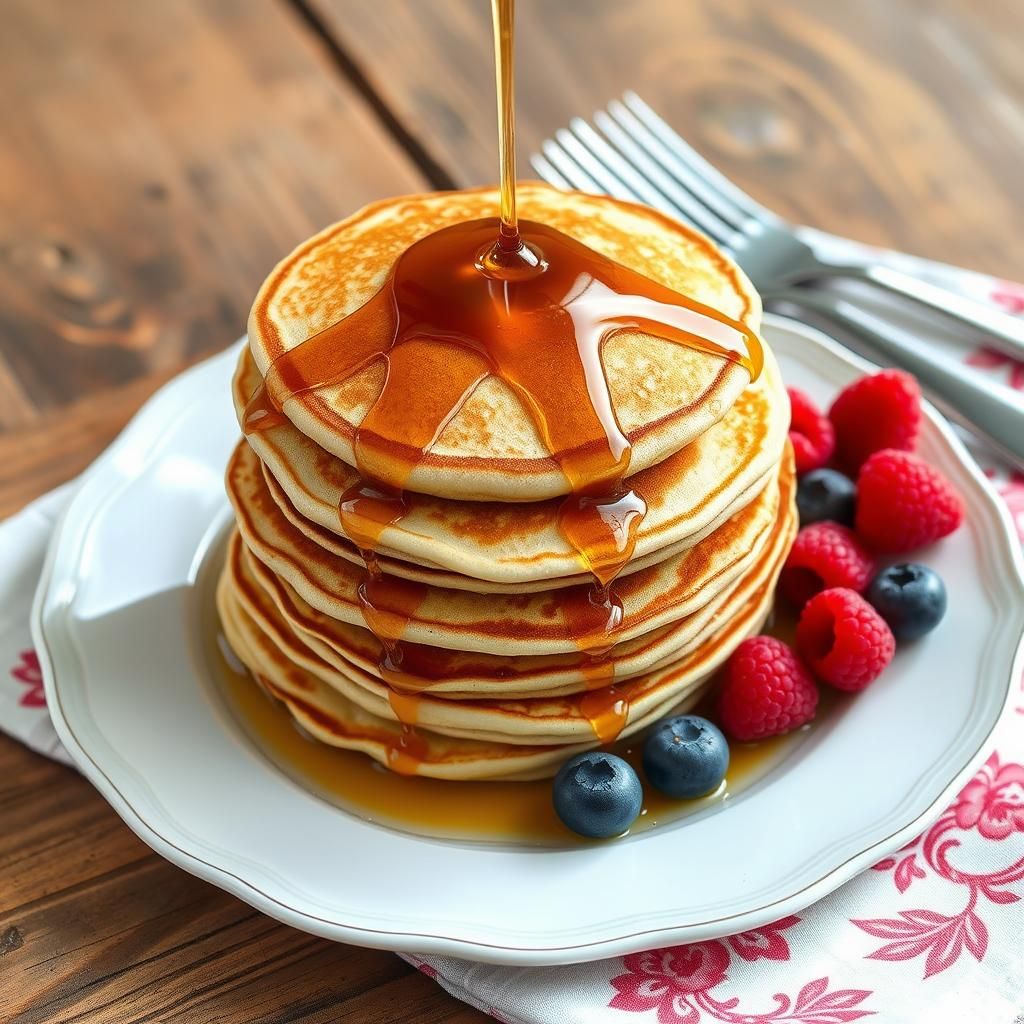
Why Resting the Batter is Crucial for Coconut Flour
Let’s emphasize this point because it’s the most common reason people encounter issues with coconut flour baking, especially pancakes. Coconut flour behaves very differently from other flours due to its incredibly high fiber content and porous structure.When you first mix coconut flour with liquid, it begins to hydrate. However, this hydration process isn’t instantaneous. It takes a few minutes for the tiny fibers within the flour to fully absorb the available moisture. If you cook the batter immediately after mixing:1. **Incomplete Hydration:** The flour hasn’t fully absorbed the liquid. This leaves pockets of dry flour within the batter.2. **Uneven Texture:** When cooked, these dry pockets lead to a gritty, uneven texture. The pancake might feel dry even if it looks cooked.3. **Poor Binding:** The flour hasn’t had time to plump up and integrate properly with the eggs, making the batter weaker and more prone to falling apart when flipped.4. **Batter Thickening:** The batter will continue to thicken in the pan as the flour heats and absorbs more liquid, which can lead to dense, doughy centers and potentially burnt outsides if the heat isn’t managed perfectly.By letting the batter rest for 5-10 minutes, you allow the coconut flour to fully hydrate. You’ll notice the batter thickens considerably during this time. This results in:* **Smoother Batter:** No dry pockets of flour.* **Improved Texture:** Pancakes that are less gritty, more tender, and cook more evenly.* **Stronger Structure:** Better binding, making flipping easier and reducing breakage.* **More Predictable Consistency:** The batter is stable before it hits the pan.So, please, don’t skip the resting step! It’s a small pause that makes a huge difference in the quality of your 3-ingredient coconut flour pancakes.The Keto DietKeto Snack Cookbook
Troubleshooting Common Keto Pancake Issues
Even with a simple recipe, working with coconut flour can present unique challenges. Here are some common problems and how to fix them:
Pancakes Falling Apart
* **Too Little Binder (Eggs):** Eggs are crucial. Ensure you are using the specified number of eggs (usually 2-3 large eggs for a small batch of flour) and that they are fresh and large. Using medium eggs when large are specified can lead to insufficient binding.* **Too Much Liquid:** While hydration is needed, excessive liquid dilutes the binders (eggs) and can make the batter too weak. Ensure the batter is thick, not runny, *after* resting. If it’s too thin, you might need to add a *tiny* bit more coconut flour (like half a teaspoon at a time) and let it rest again.* **Not Enough Resting:** As discussed, insufficient resting means the flour hasn’t fully bound with the liquid and eggs.* **Flipping Too Early:** Make sure the first side is sufficiently set before attempting to flip. Look for the edges to be firm and bubbles to appear on the surface.* **Heat Too High:** High heat can cook the outside too fast, leaving the inside raw and prone to breaking. Use medium heat.
Dry or Gritty Texture
* **Not Enough Liquid:** The batter was too thick initially or you didn’t add enough liquid to fully hydrate the flour. Remember, coconut flour is thirsty!* **Not Enough Resting:** The flour didn’t have time to fully absorb the liquid, leaving dry particles.* **Too Much Flour:** Measuring errors can lead to using too much coconut flour relative to the liquid/eggs. Coconut flour is potent; measure carefully.* **Uneven Mixing:** Dry clumps of flour weren’t fully incorporated initially. Whisk thoroughly.
Pancakes Burning Quickly
* **Heat Too High:** The most common culprit. Reduce the heat to medium or even medium-low. Keto pancakes often cook better at slightly lower temperatures than traditional ones.* **Pan Not Seasoned/Greased:** Ensure the pan is properly greased.* **Too Much Sugar Substitute:** Some sugar alcohols can caramelize and burn faster than sugar. If using a granulated sweetener (optional), ensure it’s mixed well.
Pancakes Not Cooking Through (Doughy Center)
* **Heat Too Low:** If the heat is too low, the outside won’t get sufficient heat to cook the inside properly, even after a long time. Increase the heat slightly.* **Batter Too Thick:** A very thick batter will take longer to cook through. Ensure your batter is the right consistency after resting.* **Pancakes Too Thick/Large:** Try making smaller, thinner pancakes for more even cooking.
Elevating Your 3-Ingredient Pancakes (Adding Optional Ingredients)
While the core recipe works with just three ingredients, many people find adding one or two extra components significantly improves the taste and texture, without adding substantial complexity or carbs. These essentially turn it into a 4 or 5-ingredient recipe, but the base remains the simple 3-ingredient concept.
Sweeteners
Coconut flour itself is not sweet. Adding a keto-friendly sweetener makes these taste more like traditional pancakes.* **Granulated Sweeteners:** Erythritol, xylitol (toxic to dogs!), monk fruit blend, stevia blend. Add 1-2 tablespoons, or to taste, depending on the sweetener’s potency and your preference. Granulated options work well mixed directly into the batter.* **Liquid Sweeteners:** Stevia or monk fruit drops. Add a few drops to taste. These are very potent, so start with a small amount.Add sweeteners *with* the wet ingredients or dry ingredients before combining everything.
Leavening Agents
Adding a leavening agent provides lift and creates a fluffier, less dense pancake.* **Baking Powder:** 1/2 to 1 teaspoon of baking powder (check if it’s double-acting). Mix it in with the dry coconut flour before combining with the wet ingredients. Ensure your baking powder is fresh for best results. Baking powder reacts with liquid and heat to create gas bubbles, making the pancakes rise.
Flavorings
Enhance the flavor beyond just the ingredients themselves.* **Vanilla Extract:** A classic pancake addition. Add 1/2 to 1 teaspoon with the wet ingredients.* **Spices:** Cinnamon, nutmeg, cardamom. A pinch or two adds warmth and depth. Add with the dry ingredients.* **Citrus Zest:** Lemon or orange zest (ensure it’s just the colored part) can brighten the flavor.
Salt
* **A Pinch of Salt:** Adding just a tiny pinch (like 1/8 teaspoon) enhances the sweetness (whether from added sweetener or the natural sweetness of the coconut/milk) and balances the flavors. Add with the dry ingredients.While these additions turn it technically into more than 3 ingredients, they build upon the simple foundation and are highly recommended for a more conventional pancake experience without adding significant carbs.Keto Air Fryer CookbookKeto Dessert Book
Keto-Friendly Toppings for Your Pancakes
A plain pancake, keto or not, is just a vehicle for delicious toppings! Thankfully, many fantastic keto-friendly options exist.
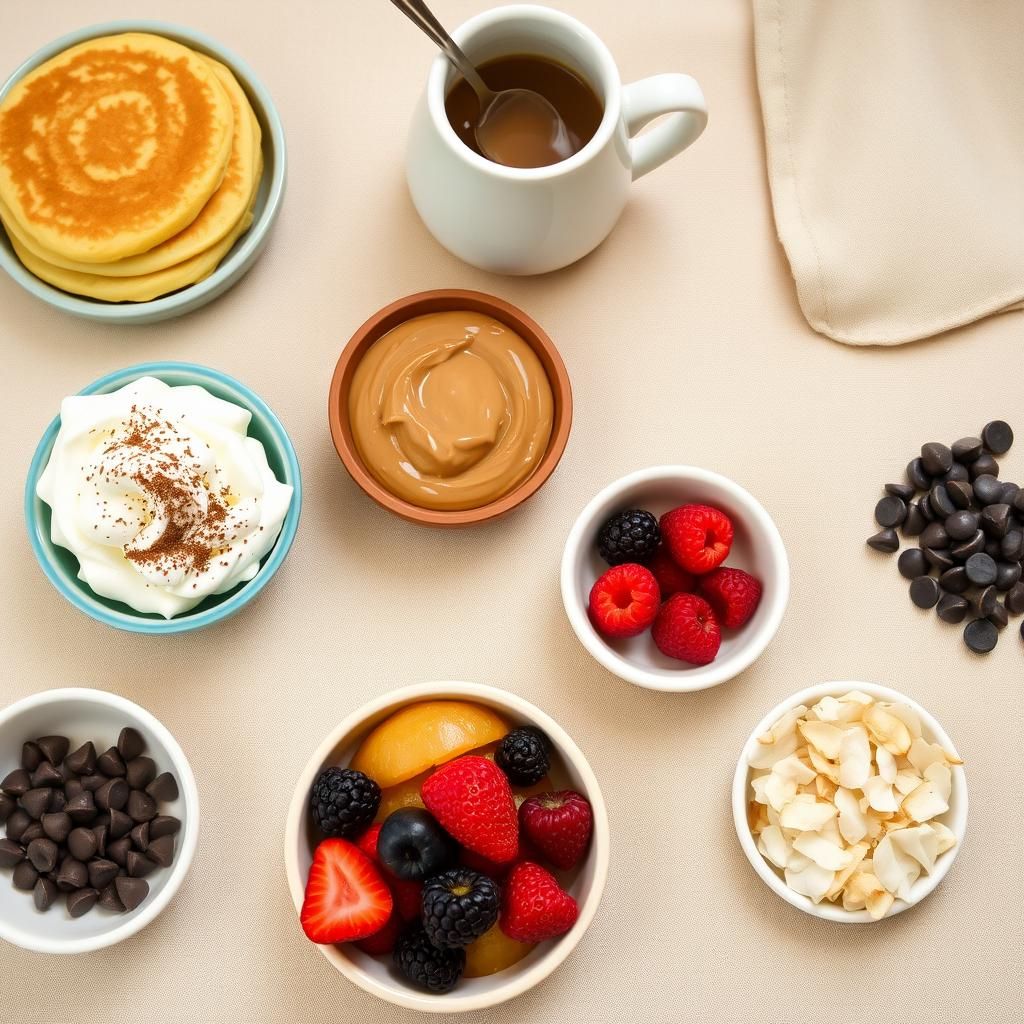
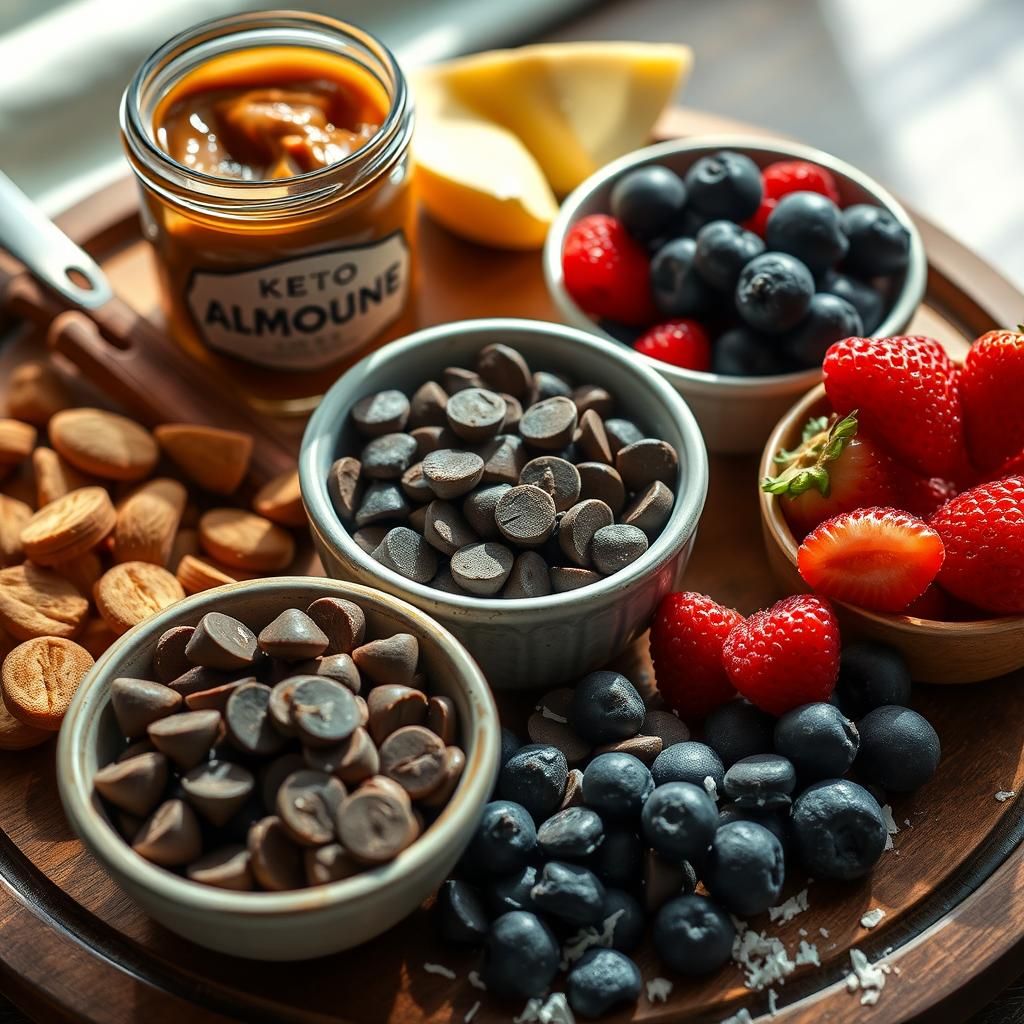
Classic Syrups (Keto)
* **Sugar-Free Maple Syrup:** Many brands offer syrups sweetened with erythritol, monk fruit, or stevia. Check the ingredients and net carb count.* **Sugar-Free Chocolate Syrup:** Can add a different kind of sweetness.
Berries
Berries are lower in carbs than most fruits and can be enjoyed in moderation on keto.* **Raspberries:** Very low in net carbs and high in fiber.* **Strawberries:** Also relatively low carb, slice them up.* **Blueberries:** Slightly higher in carbs than raspberries and strawberries, use sparingly.
Healthy Fats
Boost your fat macros and add richness.* **Butter:** A pat of grass-fed butter melting over hot pancakes is divine.* **Nut Butters:** Natural almond butter or peanut butter (check for added sugar). Ensure it’s just nuts and maybe salt.* **Whipped Cream:** Make your own by whipping heavy cream with a little keto sweetener and vanilla extract.* **MCT Oil/Powder:** Can be blended into toppings or added to the batter for an extra fat boost (be cautious with oil in batter, it can make them greasy; powder is easier).
Other Ideas
* **Sugar-Free Chocolate Chips:** Sprinkle on top while the second side cooks or serve as a topping.* **Shredded Coconut:** Toasted or plain.* **Chopped Nuts or Seeds:** Pecans, walnuts, almonds, chia seeds for crunch and healthy fats.* **Sugar-Free Jam or Compote:** Look for varieties sweetened with keto-friendly sweeteners.
The Nutritional Lowdown: Macros & Benefits
One of the primary reasons for making these pancakes is their suitability for a ketogenic diet. Let’s look at the general nutritional profile (note: exact macros will vary based on ingredients used, especially the type and amount of liquid and the size of eggs).For a batch using approximately 1/4 cup coconut flour, 2 large eggs, and a few tablespoons of unsweetened almond milk, yielding maybe 4-6 small pancakes:* **Net Carbs:** Typically very low, often ranging from 1-3g net carbs per pancake. This is a stark contrast to traditional pancakes which can have 20-30g+ net carbs each.* **Fat:** Provides moderate fat from the eggs and potentially the liquid base (if using full-fat milk/cream). Adding keto toppings significantly increases fat content.* **Protein:** Eggs contribute a good amount of protein, making these more satisfying than carb-heavy breakfasts.* **Fiber:** Coconut flour is high in fiber (around 5-6g per 1/4 cup), which contributes to the low net carb count and supports digestive health.
Why These Are Keto-Friendly
These pancakes fit into a ketogenic diet because they drastically reduce the primary macronutrient that prevents ketosis: carbohydrates. By replacing traditional wheat flour with coconut flour and avoiding sugar, the carb count is minimized, allowing your body to remain in or enter a state of ketosis where it burns fat for fuel.
Benefits of Coconut Flour
Beyond being low-carb and high-fiber, coconut flour offers other benefits:* **Lower Glycemic Index:** Compared to wheat flour, it has a lower impact on blood sugar levels, which is important for blood sugar control and maintaining ketosis.* **Gluten-Free:** Naturally free of gluten, suitable for those with Celiac disease or gluten sensitivity.* **Source of Lauric Acid:** Coconut products contain lauric acid, a medium-chain fatty acid that has various potential health benefits.
Benefits of Eggs
Eggs are nutritional powerhouses, adding significant value:* **High-Quality Protein:** Essential for muscle repair, satiety, and overall health.* **Healthy Fats:** Including beneficial omega-3 fatty acids if using pasture-raised eggs.* **Vitamins and Minerals:** Choline (important for brain health), Vitamin D, B vitamins, selenium, and more.
Overall Health Aspects
These 3-ingredient coconut flour pancakes offer a healthier breakfast alternative for many people, not just those on keto. They are gluten-free, generally low in sugar (especially without added sweeteners), and provide a good balance of fiber, fat, and protein compared to conventional processed breakfast foods.30 DAY KETO MEAL PLAN500 Delicious Keto Recipes Cookbook
Storing and Reheating Keto Pancakes
Making a batch of these simple pancakes and having them ready for quick breakfasts during the week is a great use of time and supports meal prepping for keto success.
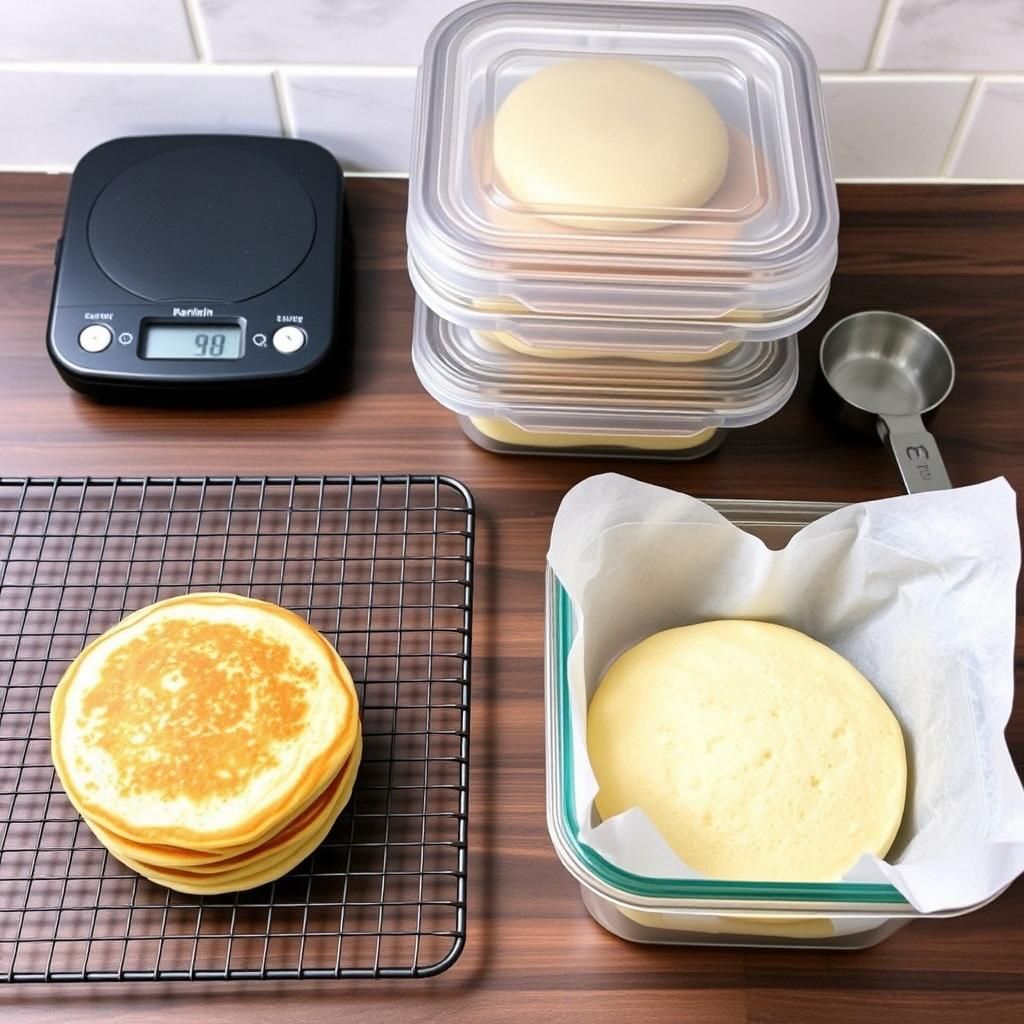
Storing Cooked Pancakes
* **Cool Completely:** Allow the pancakes to cool completely on a wire rack before storing. Storing warm pancakes will create condensation, making them soggy.* **Refrigerate:** Store cooled pancakes in an airtight container or a resealable bag in the refrigerator for up to 3-4 days. Placing a piece of parchment paper between pancakes can prevent them from sticking together.* **Freeze:** For longer storage, freeze cooled pancakes. Stack them with parchment paper between each pancake, then wrap the stack tightly in plastic wrap or aluminum foil before placing it in a freezer bag or airtight container. They can be frozen for 1-2 months.
Reheating Keto Pancakes
Proper reheating helps maintain their texture. Avoid simply piling them in a microwave.* **Skillet/Pan:** The best method for retaining crisp edges. Lightly grease a skillet over medium heat. Place the pancakes in the pan and heat for 1-2 minutes per side, until warmed through.* **Toaster or Toaster Oven:** Good for single pancakes. Toast on a low setting until warm. Watch carefully to prevent burning.* **Microwave:** The quickest method, but can sometimes result in a slightly softer, less desirable texture. Place 1-2 pancakes on a microwave-safe plate and heat for 30-60 seconds, or until warm.
The Versatility of Coconut Flour in Keto Baking
Mastering these simple pancakes is a great gateway to understanding coconut flour’s potential in other keto baking endeavors. Its unique absorption properties mean it can’t be directly substituted 1:1 for almond flour or wheat flour, but once you grasp how to hydrate it properly and use sufficient binding (usually eggs), a world of low-carb treats opens up.* **Muffins and Cupcakes:** Coconut flour can create moist, tender crumb structures when paired with enough liquid and eggs.* **Bread and Biscuits:** While denser than traditional versions, coconut flour can be used to make low-carb quick breads and biscuits.* **Cookies:** It can add chewiness and structure to keto cookies, though recipes often require careful liquid balancing.* **Wraps and Tortillas:** Thin coconut flour batters can be cooked into low-carb wraps.Understanding the principles learned from making these 3-ingredient pancakes – the need for ample liquid, sufficient binding, and the importance of resting time – will significantly improve your results in any other coconut flour recipe you attempt.
Comparing Coconut Flour Pancakes to Other Keto Options
The world of keto pancakes extends beyond just coconut flour. How do these stack up against other popular low-carb versions?* **Almond Flour Pancakes:** * **Texture:** Often results in a slightly more “conventional” pancake texture, a bit softer and less prone to crumbling than coconut flour ones if done right. Can sometimes be slightly grainy if the almond flour isn’t fine. * **Ingredients Needed:** Usually requires more almond flour by volume than coconut flour, plus eggs and liquid. Recipes are often 4+ ingredients (flour, eggs, liquid, leavener, sweetener). * **Macros:** Slightly higher in fat and slightly higher in net carbs per serving compared to coconut flour due to using more volume.* **Cream Cheese Pancakes (often called “Fat Head” pancakes):** * **Texture:** Very soft, almost custard-like or crepe-like. Not typically fluffy like traditional pancakes. * **Ingredients Needed:** Cream cheese, eggs. Sometimes a little flour (almond or coconut) is added for structure, but the base is just two ingredients. * **Macros:** Very high in fat, moderate protein, very low in carbs.* **Protein Powder Pancakes:** * **Texture:** Varies greatly depending on the protein powder used. Can sometimes be rubbery or dry. Binding can be tricky. * **Ingredients Needed:** Protein powder, eggs, liquid, sometimes a binder like psyllium husk or a little flour. * **Macros:** High in protein, variable fat and carbs depending on the protein powder base.
Why Choose 3-Ingredient Coconut Flour Pancakes?
* **Simplicity:** Arguably the easiest and quickest keto pancake recipe due to the minimal ingredients and straightforward method (once you understand coconut flour’s quirks).* **Ingredient Accessibility:** Coconut flour, eggs, and almond milk are widely available.* **Unique Texture:** Provides a slightly denser, more rustic texture that some people prefer.* **Fiber Power:** Offers a significant fiber boost compared to almond flour or cream cheese versions.* **Cost-Effective:** Coconut flour is often cheaper per batch than almond flour because you use much less of it.While other keto pancake recipes are excellent and worth trying, the 3-ingredient coconut flour version stands out for its incredible simplicity and speed, making it a perfect go-to for everyday keto breakfast needs.

Embracing a ketogenic lifestyle doesn’t mean sacrificing your favorite breakfast foods. These 3-ingredient coconut flour pancakes are a testament to how simple ingredients and a basic understanding of their properties can create delicious, low-carb alternatives to classic dishes.By utilizing the unique absorbency of coconut flour and the binding power of eggs, combined with just enough keto-friendly liquid, you can whip up a batch of satisfying pancakes in minutes. Remember the crucial step of resting the batter, cook them gently on medium heat, and don’t be afraid to experiment with optional sweeteners, flavorings, and a world of keto-approved toppings to make them your own.Whether you’re new to keto, looking for quick breakfast solutions, or simply want a healthier pancake option, this recipe is a fantastic addition to your repertoire. Enjoy the ease, savor the flavor, and feel great about staying on track with your low-carb goals. Happy flipping!
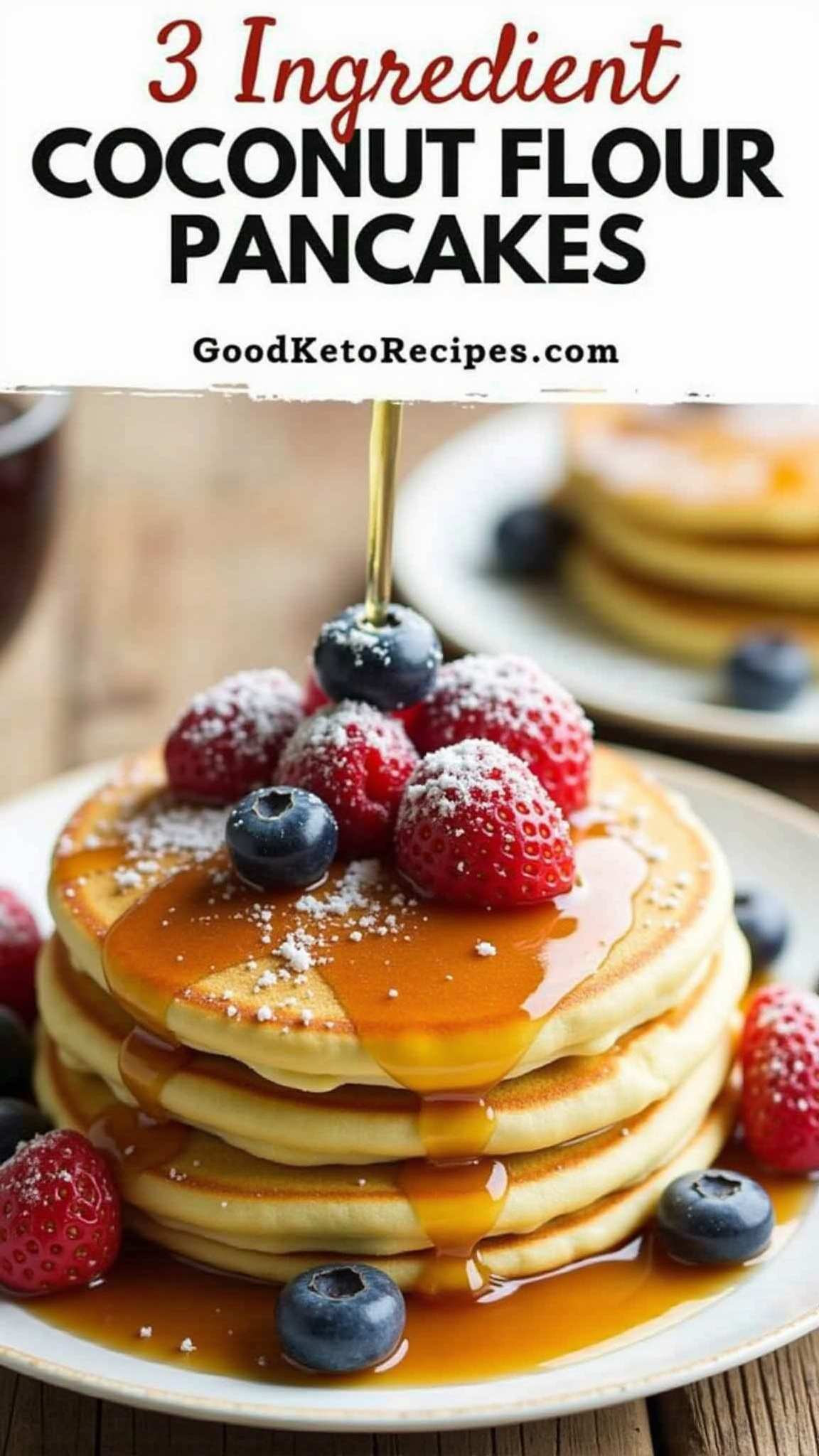
Affiliate Link Disclosure: Some of the links in this post are affiliate links. This means that if you click on the link and make a purchase, I may receive a small commission at no extra cost to you. I only recommend products or services that I personally use and believe will be valuable to my readers.
